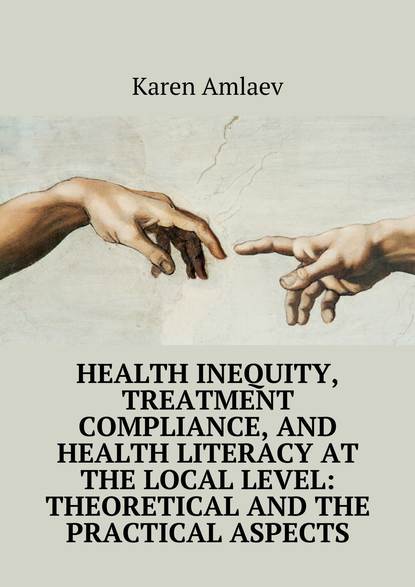По всем вопросам обращайтесь на: info@litportal.ru
(©) 2003-2024.
✖
Health inequity, treatment compliance, and health literacy at the local level: theoretical and practical aspects
Автор
Год написания книги
2015
Настройки чтения
Размер шрифта
Высота строк
Поля
– Conducting preventive, special periodic medical check-ups, early diseases detection, primary medical assistance;
– Detecting socially vulnerable groups and providing them with the individual required support;
– Working and living conditions. Since health inequity is often related to unequal living or working conditions then reducing the inequities should imply eliminating the underlying causes. Some public policies aiming at the establishment of proper and safe residence, increased standards of professional health and accident prevention, even though they were developed to help people in general, still may prove most efficient for those employed and living under the worst conditions, through increasing their physical and social environment standards;
– Choice of lifestyle. The state policy here should be aiming at offering people equal opportunities in choosing healthy lifestyles. Recreational institutions and sport facilities, for instance, should be accessible both by their location and price, while shopping mall chains should guarantee cheap and nutritional food supplies. At the same time the advertisement and promotion of products that have a negative effect on health should be restricted (Комаров Ю. М., 2010).
The areas of social policy that could have the most efficient contribution into improving people’s health include the following ones (CSDH, 2009; Final report by Commission on Social Determinants, WHO, 2010):
– Intervention into early life.
More and more research support the role of the environment where a child lives in the early childhood, which has an impact on the child’s future behavior, academic performance, and health for his/her entire life. People whose childhood included residing in families suffering from financial issues were more prone to various diseases in adulthood. Therefore, offering equal opportunities requires the earliest intervention possible. It is common knowledge that mother’s nutrition during pregnancy will impact not only the child’s health in the first year, yet for the entire life. Therefore, a woman’s weight prior to pregnancy is a good predictor of the child’s weight at birth; a lower weight, in turn, is related to a higher risk of coronary heart disease, hypertension, and diabetes in the future life. This means that investing into policies reducing negative early effects may prove profitable not only in the present, yet in the future generations as well (Gilmore. G., 2009).
The role of the population in the system is extremely important and may reveal itself in municipal volunteers and activists involved in all the aspects of healthcare and in solving all the issues. It is becoming more and more popular to join patients in groups of self-training (with some professionals involved as well), teaching them how to make the best of their living and working with some particular chronic disease or after overcoming some dependency (alcohol, tobacco, drugs). Here we can also mention the currently popular in Russia so-called schools of people with diabetes, hypertension, asthma, osteochondrosis, osteoarthrosis, etc., anonymous alcoholics groups and so on. Involving people from the most disadvantaged groups into common work will give them a chance to become part of political processes and define measures for inequity reduction, which would allow better detection and elimination of the most relevant inequities. Based on the data analyzed we can make a preliminary conclusion that breaking the vicious circle of increasing poverty and poor health, even under scarce resources, is mostly about their mobilization in three areas: successful employment (improved conditions based on involvement that may bring satisfaction); strengthening social connections, development of a stable communication circle for people who are related and who share similar ideas; consistent and economical disease prevention, which includes a wide range of issues (proper nutrition, absence of negative behaviors, general activity, maintaining social connections, positive emotions, etc.). (Комаров Ю. М., 2010).
Вы ознакомились с фрагментом книги.
Приобретайте полный текст книги у нашего партнера:
Приобретайте полный текст книги у нашего партнера:





